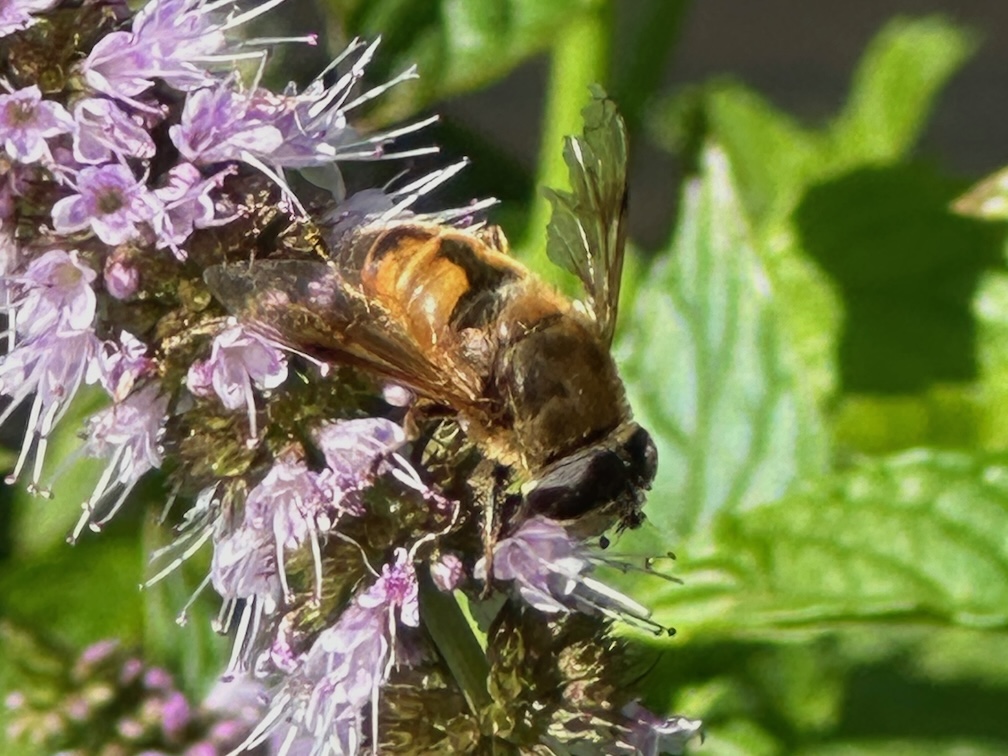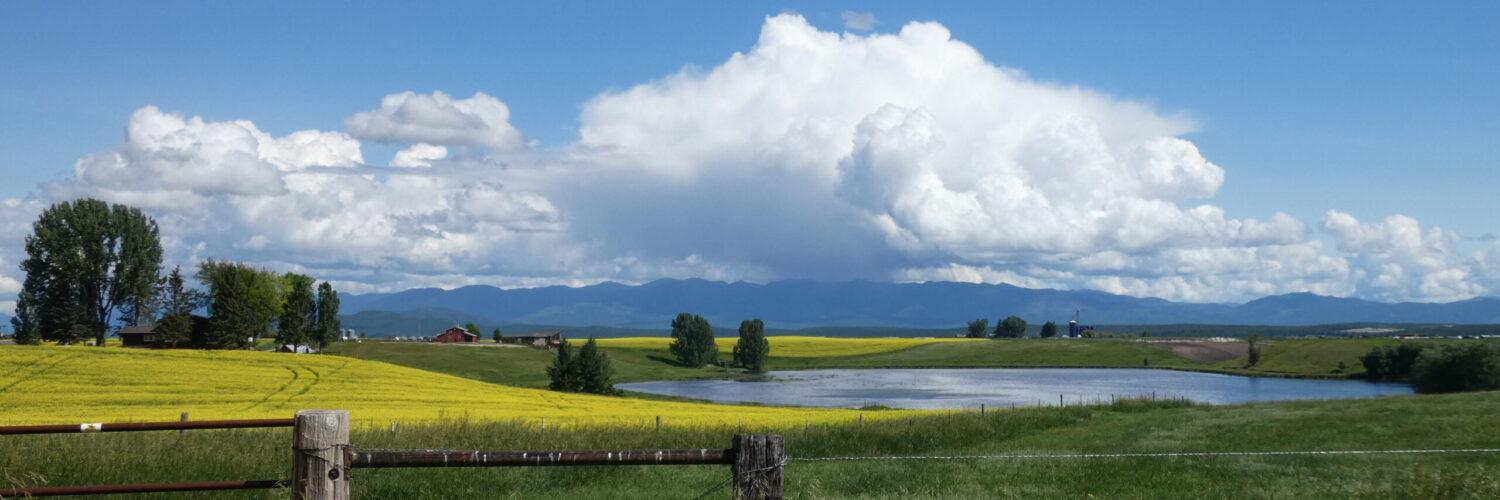by Skip Via
skip@westvalleynaturalists.org
A few days ago I noticed dozens of what I thought were bees on some flowering peppermint plants near my deck. On closer inspection, it turns out that they weren’t bees at all, but rather drone-flies. Curiosity peaked, I did a bit of research.

Drone-flies are bee mimics. Their common name comes from their resemblance to drone bees. They have evolved to look like honey bees both in size and markings as a survival technique that allows them to avoid potential predators by presenting the predator with the possibility of their getting stung should they attack. The mimicry ends there, though, as drone-flies do not have stingers. (See Pat Jaquith’s article Bee? Or Bee-Like? elsewhere on this web site for a more in-depth discussion of bee mimicry, including a list of characteristics that distinguish bees from flies and some excellent photos.)
In the photo below, you can clearly see some of the characteristics that identify this insect as a fly and not a bee. There is a single pair of wings (bees have two pairs), no “waist” between the thorax and abdomen, the large eyes almost meet, and their wings are not folded back against the body as they would be with a resting bee. Still, the resemblance to a honey bee is quite convincing at first glance.

Drone-flies are common throughout the world, appearing on every continent except Antarctica. They’re not native to North America, having been unintentionally introduced likely from Europe but are now firmly established from Alaska to the southern tier states. Their larva have the unfortunate name “rat-tailed maggots.” They live up to their unsavory-sounding name, growing in drainage ditches, manure piles, sewage, and water that has been polluted by organic matter, feeding on the bacteria that inhabit these places.
Drone-flies tend to stay in one area for their entire adult lives. They are aggressively territorial when they are in their mating areas, chasing away any species that infringe on their territory, including wasps, bees, and butterflies.
Adults feed on nectar and pollen from a wide variety of plants. Some of this pollen gets trapped in their short yellow/orange hair. Thus they are actually important pollinators of wildflowers and agricultural crops, especially given their widespread distribution and their lack of preference for some plants over others. They are most active in late summer and autumn, which explains why I am seeing them in such abundance now. They hibernate in winter months.
So next time you see bees swarming over your flowering peppermint, stonecrop, or other native plants and cultivars, take a closer look. You may be looking at drone-flies.
